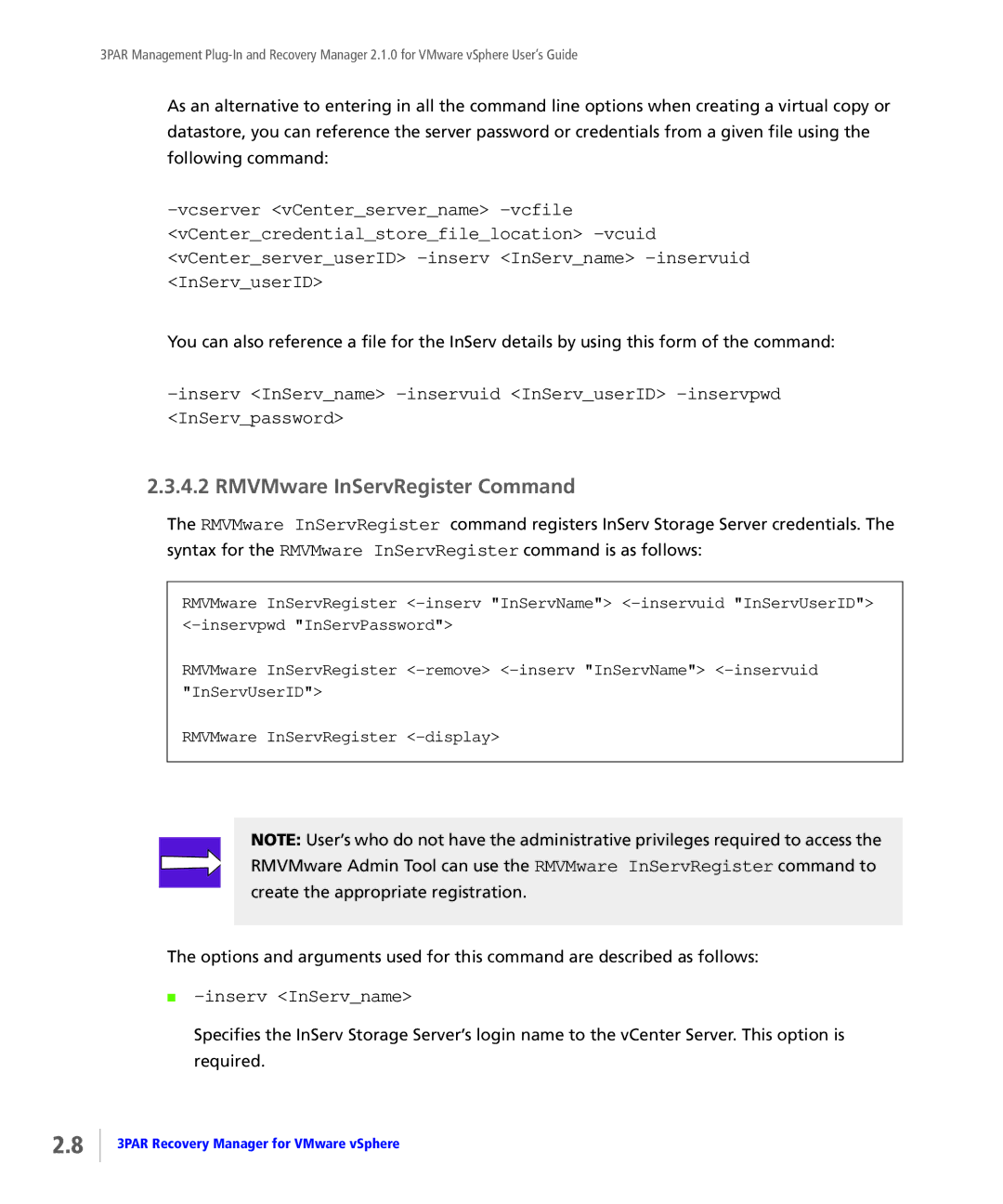
3PAR Management
As an alternative to entering in all the command line options when creating a virtual copy or datastore, you can reference the server password or credentials from a given file using the following command:
You can also reference a file for the InServ details by using this form of the command:
2.3.4.2 RMVMware InServRegister Command
The RMVMware InServRegister command registers InServ Storage Server credentials. The syntax for the RMVMware InServRegister command is as follows:
RMVMware InServRegister
RMVMware InServRegister
RMVMware InServRegister
NOTE: User’s who do not have the administrative privileges required to access the RMVMware Admin Tool can use the RMVMware InServRegister command to
create the appropriate registration.
The options and arguments used for this command are described as follows:
■-inserv <InServ_name>
Specifies the InServ Storage Server’s login name to the vCenter Server. This option is required.
2.8
3PAR Recovery Manager for VMware vSphere
